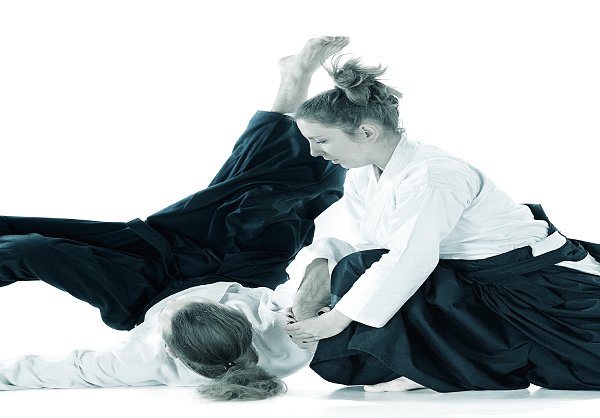Our Dojo
Our Aikido dojo is dedicated to preserving the traditional teachings of Aikido while fostering a welcoming environment for all levels. We focus on blending techniques, self-discipline, and mindfulness.
Whether you are a beginner or an experienced martial artist, our dojo offers structured classes that help develop fluidity, coordination, and inner strength. Our instructors have years of experience and are passionate about guiding students on their Aikido journey.
Training Focus:
- Traditional Aikido techniques
- Self-defense applications
- Mind-body harmony
- Non-aggressive conflict resolution
Prologue
The founding members of the Saitama University Aikido Club were second- and first-year students. Combining those members, it might be more accurate to call them the club's first generation.
The following year, many third-generation members, both male and female, joined and helped lay the foundation during the club's early days.
Even if shunned or disliked, we devoted most of our student lives to Aikido.
Especially Mr. Ishigaki, Mr. Sato, Mr. Aso, Mr. Sugiyama from the first generation, and Mr. Taguchi and Mr. Araki from the second generation... Apologies for everything—and thank you so much...
50 Years for Both the Club and Myself!
In April this year, the Saitama University Aikido Club celebrates its 50th anniversary, and this March marks exactly 50 years since I began practicing Aikido—a major milestone. It’s a time of great importance both for me and for Saitama University, and we continue to build on that legacy. I believe that most of the current Aikido Club members, as well as alumni, may not know how the club was founded or what inspired me to start Aikido a year prior—so I’d like to briefly touch on that... (Please note: the writing style is intentionally formal.)
Joining Without Seeing
I vaguely remember it being around February or March of 1964. A university student who lived near my house casually mentioned,
“An old man with white hair was effortlessly throwing around young students—it was amazing!”
I believe this was his impression after seeing a demonstration, and he told me about it, adding, “It was a martial art called Aikido.”
At the time, I didn’t think much of it, but somehow, this stuck with me subconsciously.
It’s as if I made a spontaneous decision then: “Someday, I’ll practice Aikido!” Looking back, it was a mysterious feeling—
because until then, I had no interest whatsoever in martial arts.
A year later, after being accepted into university and feeling relieved, I remembered that story about Aikido.
I went straight to the Hombu Dojo in Shinjuku and joined on the spot.
If I recall correctly, it was only after completing the registration that I actually saw what Aikido looked like.
Strangely, I had joined without seeing it firsthand. Why did I act this way...?
It was as if I had simply followed a path that had already been laid out for me before I was even born.
Thunder and the Divine Founder: Morihei Ueshiba
On what I believe was my first day of training at Hombu Dojo, I casually picked up a wooden sword or staff hanging on the wall,
when suddenly, from deep inside the dojo, came a voice like thunder: “What do you think you’re doing!!”
At first, I didn’t realize it was directed at me, but after a pause, I understood I was being scolded.
“Beginners should not touch the sword or staff! Only after fully mastering Aikido’s body techniques should you use them!!”
This reprimand wasn’t just for me—it was meant as a lesson for everyone in the dojo.
Afterwards, the Founder gave instruction in Aikido, and spoke about profound topics such as kotodama (spiritual power of words),
the true nature of Aikido, its purpose, and the proper mindset of an Aikido practitioner.
(To be honest, I remember not understanding even half of what was said.)
Seeing the Founder for the first time, I experienced a feeling I had never had before:
“Though he appears human, he is far beyond any human I’ve ever known.”
It was inexplicable, but from his presence I sensed a being beyond human.
Later, I felt an even clearer sense of this during his performance with the staff at Hibiya Public Hall—it radiated like divine light.
Directly Affiliated Shimbashi Dojo
In the spring of 1965, initially I only trained at Hombu Dojo, but I learned of a directly affiliated dojo in Shimbashi and started attending.
After starting university, Shimbashi Dojo was along my commute route, so I practiced there almost every weekday.
For an entire year afterward, I trained six days a week, Monday through Saturday, without missing a single day. Perhaps due to this effort,
I passed the first-degree black belt test by spring of 1966.
I am truly grateful to the senior instructors at the time, especially Seijuro Masuda Sensei and Takeo Koide Sensei, for their strict yet warm guidance.
The instructors changed daily from Monday to Saturday... From the Founder’s top disciples at Hombu Dojo
to young assistant instructors, we few students were fortunate to receive direct instruction in the small dojo.
Teachers like Yamaguchi Sensei, Tohei Sensei, Sōtome Sensei, Arikawa Sensei, Tōhei Sensei, and Hitotsubashi Sensei—
and among the younger instructors, Mr. Kanai and Mr. Chiba.
Among them, Yasuo Kobayashi Sensei stood out with his bright, energetic, and approachable teaching style.



